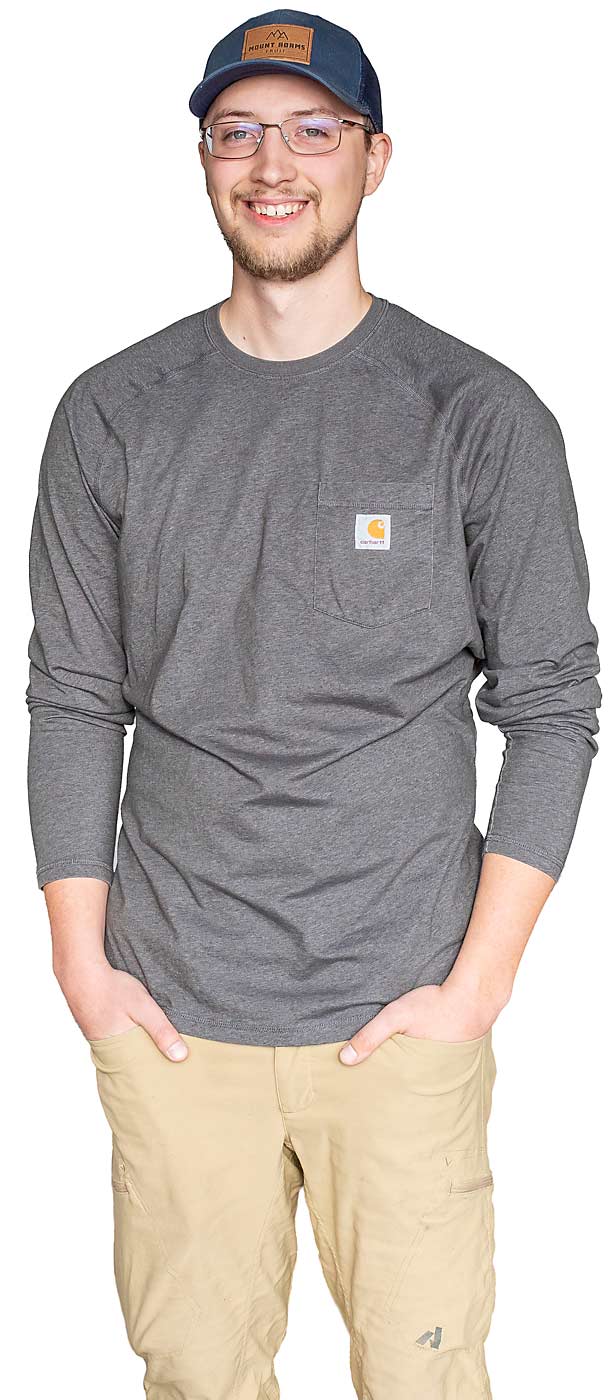family background/ Kyler, a fourth-generation farmer in the White Salmon Valley, graduated from Washington State University with a fruit and vegetable management degree. He’s married to Payton and is the son of Dena and John Riggleman.
age/ 26
hometown/ White Salmon, Washington
crops/ Pears, cherries and apples
role/ Family farm manager
business/ Riggleman Orchards

How did you get your start?
I started swamping cherry buckets at 7 or 8 years old, and I’d go out and help for a couple of hours. When I turned 13, I directed my first cherry crew during harvest, checking buckets and counting them for about 10 to 12 people. I learned a bit of leadership from running the crew, and it was a big step having to manage adults as a kid.
I wouldn’t say I was great at it at first, for sure, letting things slide that probably I shouldn’t have. But I found my voice being thrown into that. When I was in college, I’d work every summer with our pears, and I learned how much harder pear harvest really is compared to working with cherries.
Pears had such a longer harvest time, too. Cherry season is usually a bang, bang, you’re done — moving from block to block.
What was it like returning to the farm after college?
When I came back, I definitely needed a little bit of direction. I did not know the timing of everything and how it has to get done. I grew up on the farm, but I wasn’t exactly watching everything.
All the small stuff, the order of things. For the first couple of years, there were things that I’d do that I didn’t even realize why we were doing it. Staying in the loop about what’s going on at that time is important, and you can get kind of scatterbrained on a small family farm, for sure.
One of the first challenges after returning was helping with irrigation. I learned real quick that it was a seven-days-a-week job, starting at 6 a.m. every day. That was probably the biggest culture shock, realizing there’s not even a single Sunday morning to sleep in. And then getting into pear harvest time and operating the tractors up big, muddy spots and dealing with the terrain was another challenge. We’re up at higher elevation here.
There are more challenges here compared to lower-elevation farms. Everything you see here is hills. Lots of side hills, terraced rows and a lot of big timber with snow. I definitely needed to learn a lot of things before hopping on the tractor, safety-wise. I’d say that you need to be ready to learn from your mistakes when you return to the farm.
What was one of your fun projects after returning?
I helped start a new block of Cosmic Crisp apples (WA 38) and it was exciting. The new variety had some different things that needed to be done, horticulturally, compared to anything else that we had grown.
Getting my feet wet with a new variety with a lot higher density and different tree row spacing than we’ve ever done was exciting. Getting it just right, you know, and figuring out how we can take what we learned in that block to our other blocks was good, too.
For instance, learning how to get the flail mower through that tight row spacing or whether or not we could get the wing mower through it, and to see what other tractor implements we could use, was a big deal. That block was our first drip system that we had ever put in, and I got to help out with that.
Why did you pursue agriculture?
First and foremost, I’m a farmer. A big reason is because of family heritage. From the time I was riding around on a tractor in my dad’s lap, farming is what I’ve known, and the work is what I’ve loved.
A big thing that motivates me is remembering how wonderful my childhood was, and I really want those experiences for my children. Having that freedom and fresh air and then working alongside your family, it’s just a wholesome life.






Leave A Comment